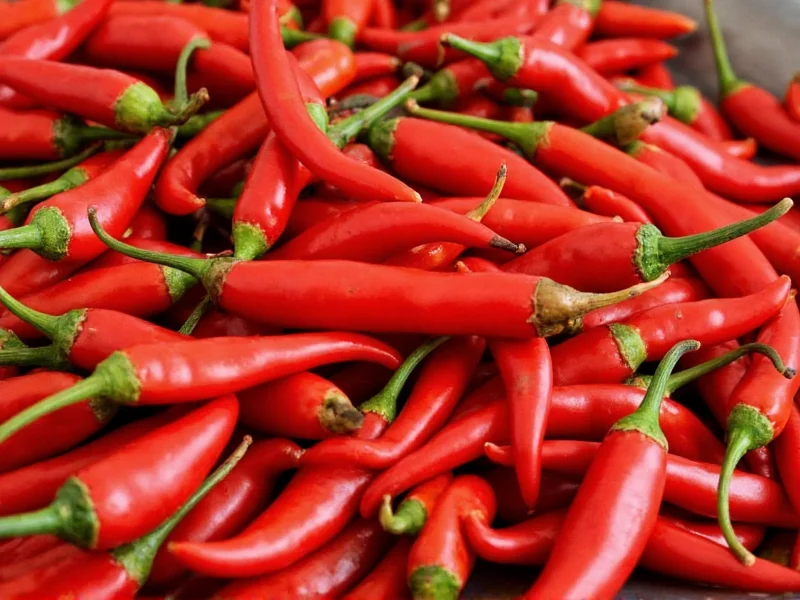When your chili becomes unexpectedly fiery, understanding the science behind spiciness helps you choose the best remedy. Capsaicin, the compound in chili peppers that creates heat, is oil-soluble and binds to pain receptors in your mouth. This explains why water often makes burning sensations worse—it spreads the oil rather than neutralizing it. Knowing how to reduce spiciness in chili requires methods that either bind with, dilute, or counteract this compound.
Why Your Chili Became Too Spicy
Several factors contribute to overly spicy chili. You might have misjudged pepper quantities, used an unexpectedly hot batch of chili powder, or allowed the capsaicin to concentrate during simmering. The heat intensifies as water evaporates, leaving behind more concentrated capsaicin. Understanding these dynamics helps prevent future issues when making spicy chili recipes.
Most Effective Methods to Tone Down Spicy Chili
When fixing too spicy chili, start with the most targeted solutions first. These approaches address the chemical nature of capsaicin rather than just masking the heat.
Dairy Solutions: The Scientifically Proven Approach
Dairy products contain casein, a protein that breaks the bond between capsaicin and your pain receptors. This makes dairy the most effective immediate solution for how to tone down spicy chili.
| Dairy Option | How Much to Add | Best For |
|---|---|---|
| Whole milk or heavy cream | ¼ cup per serving | Tomato-based chili |
| Sour cream or yogurt | 2-3 tablespoons per serving | All chili types (stir in or top) |
| Shredded cheese | ½ cup per pot | Bean-based chili |
For the best results when making spicy chili milder, add dairy gradually while the chili simmers. Whole fat dairy works better than low-fat options because capsaicin is fat-soluble. Avoid boiling after adding dairy to prevent curdling.
Acidic Counterbalances: Quick Flavor Correction
Acids help neutralize the pH imbalance created by excessive capsaicin. This method works particularly well for how to reduce spiciness in chili without altering texture.
- Lime or lemon juice: Start with 1 tablespoon per serving
- Vinegar (apple cider or white): 1-2 teaspoons per serving
- Tomato paste: 2-3 tablespoons per pot
- Canned tomatoes: ½ cup per serving
Acids work by changing how we perceive heat, making them ideal for quick fix for overly spicy chili situations. Add gradually and allow 5-10 minutes for flavors to integrate before tasting again.
Sweetening Agents: Balancing the Heat Profile
Sugar molecules compete with capsaicin for receptor sites, effectively reducing perceived heat. This approach helps when you need to fix too spicy chili recipe without compromising texture.
Natural sweeteners work best:
- Honey: 1-2 teaspoons per serving (adds complexity)
- Brown sugar: 1 tablespoon per serving (complements chili flavors)
- Maple syrup: 1-2 teaspoons per serving (adds depth)
- Fruit preserves: 1 tablespoon per serving (adds subtle fruit notes)
For authentic chili that's too hot how to fix this issue, add sweeteners gradually while the chili simmers. The sugar needs time to integrate fully with other flavors.
Dilution Techniques: The Volume Solution
When you've significantly over-spiced your chili, increasing the overall volume can effectively reduce heat concentration. This method works well for how to balance spicy chili flavor when other approaches aren't sufficient.
Add one or more of these ingredients:
- Beans (kidney, pinto, or black): 1 can per overly spicy batch
- Vegetables (diced tomatoes, corn, or zucchini): 1-2 cups
- Broth or stock: ½-1 cup
- Grains (cooked rice or quinoa): 1 cup
Dilution works because it reduces the concentration of capsaicin per serving. This approach maintains the original flavor profile while making the chili more palatable.
What NOT to Do When Fixing Spicy Chili
Certain common approaches actually worsen the situation when trying to tone down spicy chili:
- Don't add more chili powder or hot sauce - This seems obvious but sometimes people mistakenly think they can balance heat with more heat
- Avoid plain water - Water spreads capsaicin rather than neutralizing it
- Don't use alcohol - While alcohol dissolves capsaicin, it evaporates quickly, potentially concentrating the heat
- Don't skip tasting as you adjust - Small increments prevent overcorrection
Preventing Overly Spicy Chili in the Future
The best approach for how to tone down spicy chili is prevention. Follow these practices for consistently balanced results:
- Start with less spice than recipes suggest, especially with dried peppers
- Add spices gradually throughout cooking rather than all at once
- Remove seeds and membranes from fresh peppers (where most capsaicin resides)
- Keep dairy or acid components separate to add only if needed
- Test small portions of spice blends before adding to the entire batch
Understanding Capsaicin for Better Chili Control
Knowledge of capsaicin's properties helps you make informed decisions when fixing too spicy chili. This compound:
- Is fat-soluble (explaining why dairy works)
- Is not water-soluble (why water doesn't help)
- Binds to TRPV1 receptors in your mouth
- Increases in concentration as liquid evaporates during cooking
- Varies significantly between pepper varieties and even individual peppers
This scientific understanding transforms how to reduce spiciness in chili from guesswork to a precise process. When neutralizing capsaicin in food, you're essentially disrupting its molecular interaction with your taste receptors.











 浙公网安备
33010002000092号
浙公网安备
33010002000092号 浙B2-20120091-4
浙B2-20120091-4